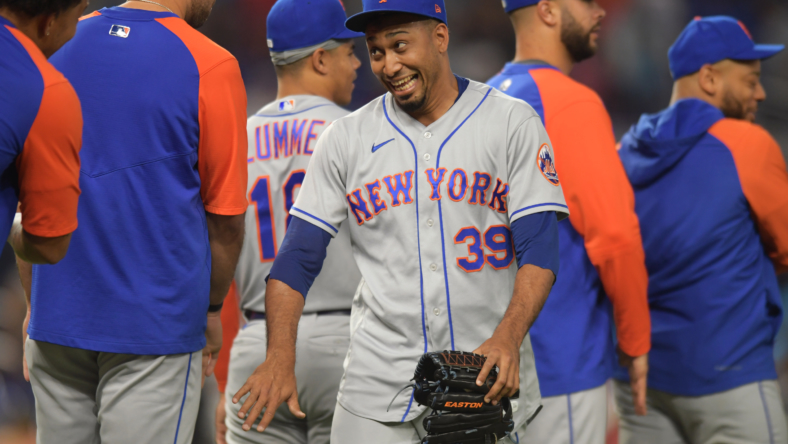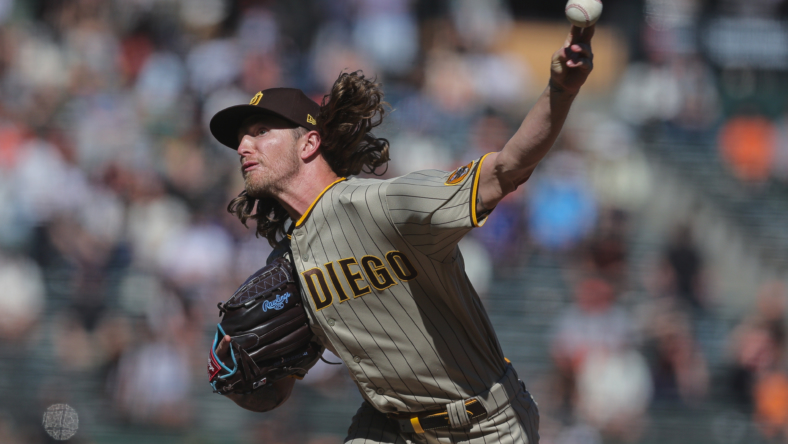
Twenty years ago this spring, Theo Epstein and his Boston Red Sox caused a stir around MLB when the contender caliber club went to spring training without a designated closer, a few months after letting 40-save All-Star Ugueth Urbina walk as a free agent.
“I think they’re on to something,” then-Toronto general manager J.P. Ricciardi told ESPN’s Sean McAdam at the time.
“I think it’s great,” Oakland exec Billy Beane told McAdam. “Does it make any sense to have your best reliever waiting in the bullpen when the game’s tied in the seventh or eighth? By the time the ninth inning comes, it might be a three-run game. A lot of guys can get those last three outs. Why waste your best pitcher there?”
Related: MLB predictions 2023
Of course, that had been the argument of a new breed of MLB executives for at least a few years by then and baseball analysts (often outside the game) long before that, going back to Bill James — who happened to be a newly-hired advisor to Epstein’s front office in 2003.
The plan didn’t work, mostly because the Red Sox relievers underperformed. But some considered much of the cause the lack of set roles for such an inherently volatile position area. And Epstein signed Beane’s more traditional closer, Keith Foulke, as a free agent for 2004.
“The best thing that happened was, when Keith signed, I called him and went, ‘Thank you,’ ” Red Sox reliever Alan Embree told Boston AP then. “It was like, ‘You just made it a lot easier on the rest of us. We all know our roles.’”
That might have been the hottest takeaway from most of the industry and definitely from those in uniform at the time.
Whether it was the best takeaway was at least debatable.
And 20 years later, it’s still a major reason for teams that resist the change to the more analytically sensible way to manage a bullpen. Players, especially relievers, need to know roles. There’s a human element involved in those final three, toughest outs; not everybody has the makeup to do it.
But 20 years later it looks like the time is right for change like that to become closer to the norm. And to work.
New-age thinking regarding MLB’s closer role

Who needs a classic closer these days — in an era of valuable multi-inning relievers, bigger bullpen staffs and five-inning starters?
The New York Mets thought they did, enough to pay their dominant, All-Star closer $102 million after their 101-win season last year.
Then they watched Edwin Diaz suffer what’s probably a season-ending knee injury while celebrating a World Baseball Classic win Wednesday night, and now the Mets might be forced into a mix-and-match late-inning alignment.
And they might be able to make it work.
The Tampa Bay Rays, after all, have blurred all the lines when it comes to pitching roles — from closers to openers — and have been in the playoffs the last four seasons.
The Rays had nobody with more than eight saves last year; nobody with more than 14 in 2021; nobody with more than six in the 60-game 2020 season; and even when they had a guy save 20 in 2019, they had 11 different relievers record saves.
The Los Angeles Dodgers won 111 games last year, despite struggling at times in the ninth inning after replacing longtime closer Kenley Jansen with Craig Kimbrel. And now with late-inning ace Daniel Hudson likely to open this season on the IL (knee), manager Dave Roberts seems comfortable finishing games with any of “a handful of guys.”
“I don’t think we need to break camp and say that we have a dedicated closer,” he told reporters a few days ago.
Related: Hall of Famer offers a solution to speeding up MLB games
Chicago Cubs manager David Ross has refused to designated a closer since halfway through his first season in 2020, when he was forced to pull a struggling Kimbrel from the role. Even when the Cubs had an experienced and effective David Robertson last year, he was the closer in practice but not in name.
Then the Philadelphia Phillies traded for him, used him among a group of late-inning guys and wound up in the World Series.

In fact, both teams that played for the National League pennant last year traded for a closer at the deadline — the San Diego Padres nabbing Josh Hader from the Milwaukee Brewers and sending their first-half closer, Taylor Rogers, to Milwaukee in the deal.
The New York Yankees won 99 games last year, and Clay Holmes (20 saves) only became the closer when Aroldis Chapman didn’t get the job done anymore.
Related: Why MLB fans should be rooting for San Diego Padres’ success
The Seattle Mariners ended a long playoff drought last year and then won a playoff series, and wound up using ace Robbie Ray as a closer against the Houston Astros in Game 1 of a Division Series loss.
The point is, plans and closers often change even within the most stable, resourceful environments and with the highest stakes in play.
And closer help is often available at the deadline for teams with more pressing needs — late-inning relief help in general is always available.
There have never been more relievers in as many different roles making more money for more valuable contributions at every point in the game than now.
So more reason than ever to speed up this slow change in bullpen management and more reason why now is the time for teams to embrace as an industry standard a concept more than 20 years in the making.
Gordon Wittenmyer covers Major League Baseball for Sportsnaut. You can follow him on Twitter at @GDubCub.
